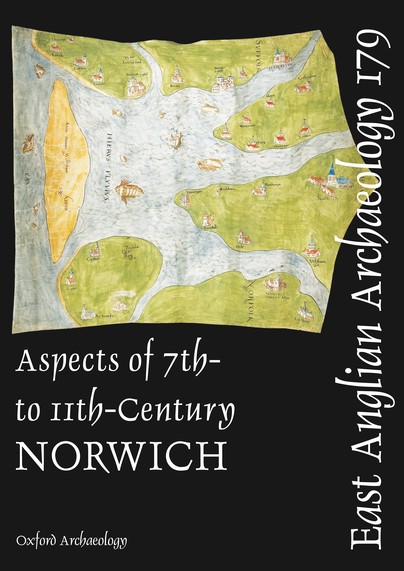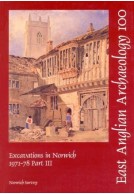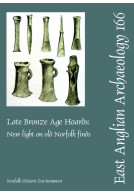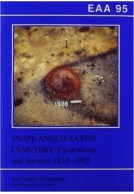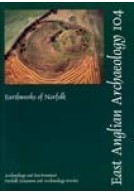EAA 179: Aspects of 7th- to 11th-century Norwich (Paperback)
Imprint: East Anglian Archaeology
Series: East Anglian Archaeology Monograph
Pages: 138
Illustrations: 60
ISBN: 9781907588150
Published: 1st September 2023
Script Academic & Professional
Series: East Anglian Archaeology Monograph
Pages: 138
Illustrations: 60
ISBN: 9781907588150
Published: 1st September 2023
Script Academic & Professional
You'll be £20.00 closer to your next £10.00 credit when you purchase EAA 179: Aspects of 7th- to 11th-century Norwich. What's this?
+£4.99 UK Delivery or free UK delivery if order is over £40
(click here for international delivery rates)
Need a currency converter? Check XE.com for live rates
(click here for international delivery rates)
Need a currency converter? Check XE.com for live rates
Despite extensive archaeological investigations in Norwich over many decades, its Middle Saxon origins as Norvic/Northwic remain obscure and elusive, and its Anglo-Scandinavian aspects have seen relatively little recognition until recently. This report focuses on five excavations in the historic core of the settlement. Lying on either side of the River Wensum, linked by a crossing, they revealed archaeological remains of the 7th to 11th centuries. The excavations were significant in revealing in-situ archaeological features of Middle Saxon date, along with a range of contemporary finds including a dispersed ‘coin hoard’ of the late 7th or early 8th century, sufficient to add weight to the hypothesis of an early trading centre.
Triggered by the Danish invasion of East Anglia of AD 865, a burh to the north of the river enclosed the earlier mercantile centre and its river crossing during the early 10th century. Sites further south lay within Conesford – again, an area with Middle Saxon origins. It formed part of Norwich’s second burh which was enclosed in the 10th or early 11th century. Much of the archaeological evidence finds parallels at other Anglo-Scandinavian centres of the period. Of particular note are the different techniques of building construction exhibited on either side of the river, including sunken-floored buildings of urban form, one of which held the remains of a fishing net.
This new analysis provides the opportunity to review the pre-Norman settlement at Norwich and its relationship to the river, trade and overseas contacts, agricultural activity and the fishing industry.
Other titles in the series...
Other titles in East Anglian Archaeology...







